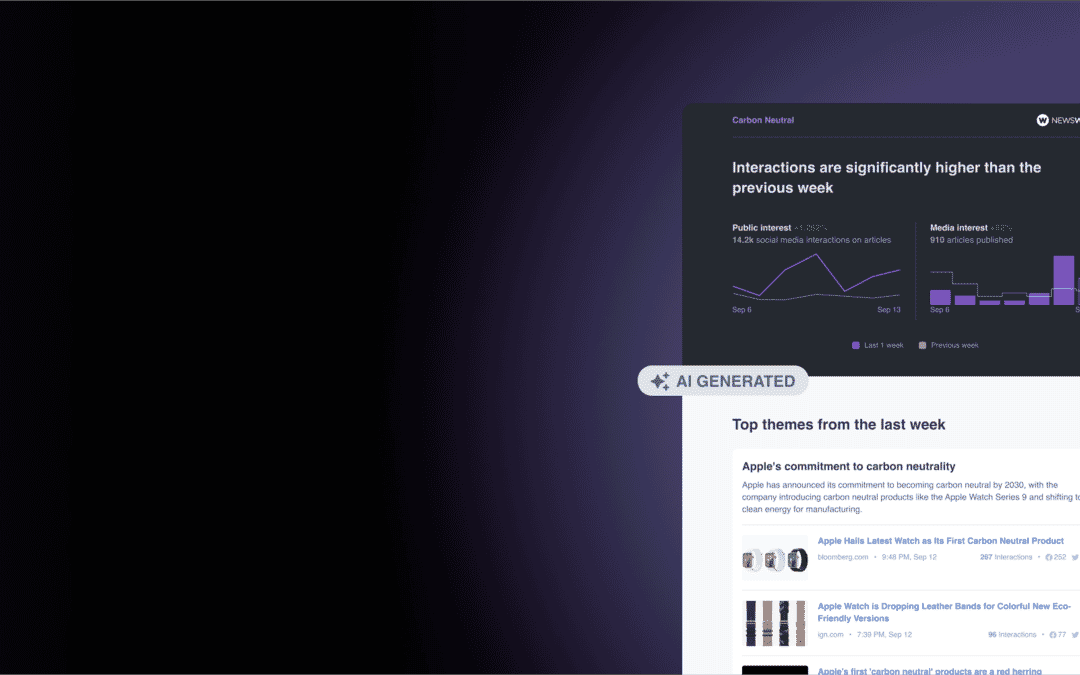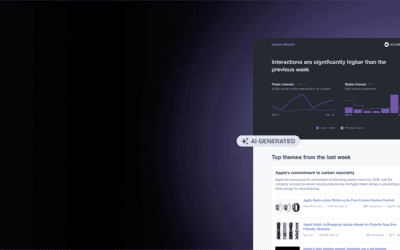Upworthy’s Head of Audience Growth and Popular Science’s Engagement Editor sat down with us to discuss how they use social data to understand how to engage their audiences and create better stories.
In today’s social distribution marketplace, there are endless engagement metrics to track. Video views, click-throughs, unique views, shares — how can today’s newsrooms understand what’s important for their own strategy? How can they filter out what performance metrics will help them create better content going forward?
On April 19, we sat down with our friends at Parse.ly to discuss how special-interest digital publishers like Upworthy and PopSci are using social data to direct strategy. It’s become increasingly clear that publishing is no longer a matter of pen and paper — today’s journalists need to intimately understand the social space, how to crunch engagement data, and use it to better reach their target audiences.
Melissa Gilkey, Head of Audience Growth at Upworthy, and Mallory Johns, Engagement Editor at PopSci, discussed how publishers of all sizes can use social data to create engaging content that their readers will keep coming back for.
Melissa and Mallory agreed on these top three points:
- A data-driven approach to boosting audience engagement is pivotal for a successful newsroom
- Each newsroom must create conventions for measuring their own success to create custom best practices
- Those social media best practices need to be distributed across the entire newsroom
A data-driven approach to boosting audience engagement
Melissa and Mallory agree that the best way to truly understand how to engage your audience is to look to what they’re interacting with on social. By analyzing the actions readers take on their content — whether it’s a like or a click to read more — newsrooms can create their own best practices to replicate success.
“I apply customer acquisition marketing to digital media and journalism, looking at conversion from social platforms to travel back to owned sites,” said Melissa.
Melissa applies this analytical approach to both measuring Upworthy’s performance and benchmarking competitors. When looking how others are performing, Upworthy factors in not only total engagement, but ratio of engagement to their following size. Ratio is equally important to consider when benchmarking internal posts, by looking at how many users a post was exposed to, versus how many took an action.
Above all, tracking and using this data to understand how Upworthy and competitors have performed is pivotal, and is what informs the best practices they use to create content moving forward.
“We track unique views, video views, average page views per post. Mainly, we look at overarching performance, and then look to granular metrics to see what has changed (like share rate) — and then analyze why,” said Melissa.
Mallory said PopSci employs a similar strategy, with her job as an editor entailing more spreadsheets and number crunching than one might think. Mallory uses forensic analysis of both PopSci and competitors’ posting strategies and engagement rates to keep a pulse on how the editorial team should be packaging content.
“For competitors, look at the ratio of their output and what formats they’re producing the most of and getting the most engagement on,” advised Mallory, “Also do this to benchmark yourself — what is your baseline engagement metric? Look at your top performing posts and find patterns amongst them with content and time of posting.”
For both PopSci and Upworthy, tracking granular social metrics to inform publishing strategy is of pivotal importance. Melissa and Mallory agree that one of the most important things to consider is ratio of engagement:
- When benchmarking against competitors, compare the size of their followings to their total engagement, and rate of engagement on posts
- When benchmarking internally, compare the size of the audience a post was exposed to, to the number of users who then took an action
But how do you use this data to inform your strategy, and create your own baseline best practices?
Using social engagement data to benchmark and strategize
When tracking performance, both Mallory and Melissa said it’s first important to understand which social platforms provide the most benefit, and then how you can optimize your strategy for your most important platforms.
This will vary brand to brand. Though Upworthy and PopSci are both special-interest, digital publishers, they have slight differences in the importance of social platforms to each.
“Facebook is where our users — and most socially active users — are. The ROI isn’t there for us for Instagram and Snapchat. We try to build brand awareness there instead of putting huge work into shareable content.” said Melissa Gilkey, Upworthy.
Because of this, the Upworthy team puts a larger concentration on creating authentic, native posts and video for Facebook, as well as Instant Articles.
PopSci has a slightly different take.
“If the audience is there, they want to consume. I think you can drive actual traffic from things like Instagram stories,” said Mallory Johns.
Regardless, knowing what each platform brings to the table for your brand is essential when allocating resources and creating a strategy. For example, though Twitter is the second-largest driver of traffic for PopSci after Facebook, it still only drives about 1 to 2 percent of total traffic.
Like Upworthy, Mallory agreed that Facebook is the bread and butter of PopSci’s social strategy. But both Mallory and Melissa said they put a concentration on where stories travel after Facebook.
“It’s important to track where a link is going from Facebook to another platform, to see how you can build a new distribution strategy,” Mallory Johns of PopSci, said.
“We like to pay attention to ‘generational tracking’,” said Melissa Gilkey of Upworthy, “What happens to something after it’s shared on a social platform, what’s the map of where it goes?”
As Melissa said, tailoring how you use each platform to benefit your brand is essential. While Upworthy uses Instagram and Snapchat to build brand awareness, they use Facebook to drive traffic.
After identifying the platforms that are producing the most results, publishers need to understand why their content is performing well, and use that information to inform future coverage.
“Understanding why audiences are sharing is important — when an audience feels activated, they’re going to be more likely to share. That’s why we put a solutions-oriented approach on hard news articles, to put a positive, uplifting spin on taking action,” said Melissa Gilkey.
PopSci has similarly tapped into why readers are engaging with them on Facebook, and have used the knowledge that their readers react well to expanded content on niche topics to build out their Facebook presence.
“We’re experimenting with using Facebook to build very small, niche communities,” said Mallory Johns. “We build a community around a specific topic rather than attempting to only drive traffic from social. Social is the place where people can really engage with PopSci.”
Getting buy-in for best practices across the entire newsroom
Mallory and Melissa understand the importance of tracking social performance, and crunching the data to create tailored best practices and targeted strategy for their newsrooms.
But applying that data-driven strategy to all of the content Upworthy and PopSci produce requires buy in across the organization.
“We use Facebook Power Editor to A/B test our posts, and see what headlines and photos perform best,” said Mallory. “It’s important to distribute those best social practices across your newsroom, so that everyone knows what makes a good headline or engaging story for PopSci.”
Like PopSci, Upworthy makes sure that writers are paying attention to granular engagement metrics, and gives them easy access to the data they need to optimize stories for Upworthy’s audience.
“We have proprietary data that the whole organization uses to now tailor content, and predict how content will perform based on past metrics,” said Melissa.
Above all, Melissa and Mallory say it’s most important to use social data to help you stay true to your unique brand and message.
“Our own viral content is more effective and more consistent with our brand, and drives more new fan growth than anything we cross post with other pages,” said Melissa on Upworthy’s content.
Thanks to both Melissa and Mallory for sharing their wisdom with us on how a data-driven newsroom can deliver results. It’s clear that each newsroom needs to set their own KPIs to guide their strategy, and get their whole team onboard with social media best practices to succeed.
Jumpstart your own content strategy. Take a demo of NewsWhip Analytics.

Benedict Nicholson
Benedict Nicholson is the Head of Research and Editorial at NewsWhip. An Englishman in New York, he is interested in the intersection of PR, brands, and journalism, and the trends and innovation around that.
Email Benedict via benedict.nicholson@newswhip.com.











